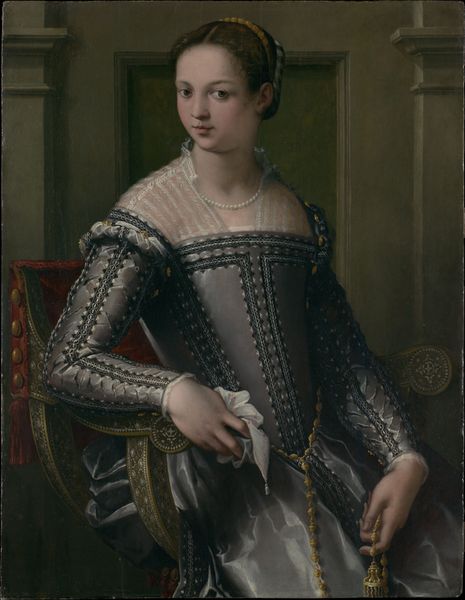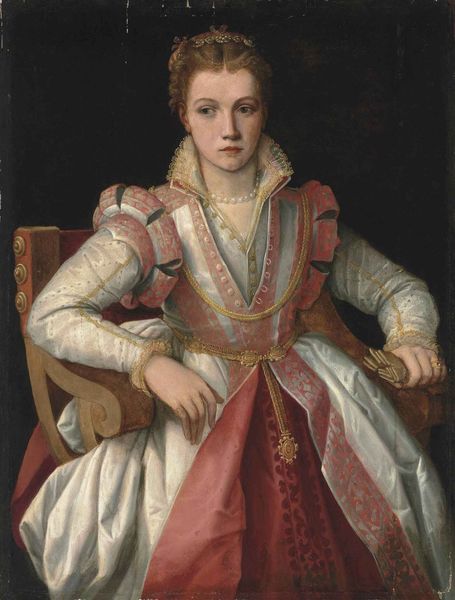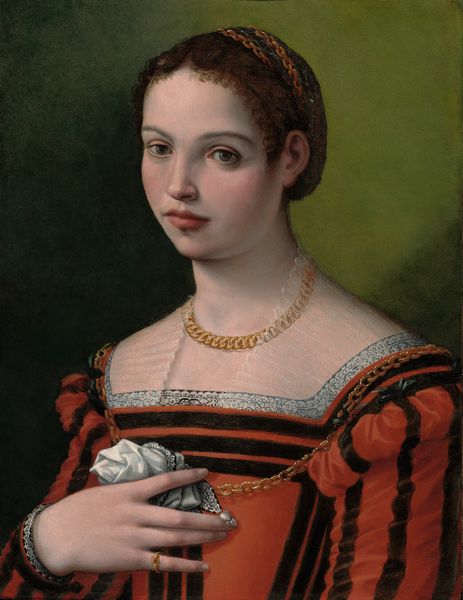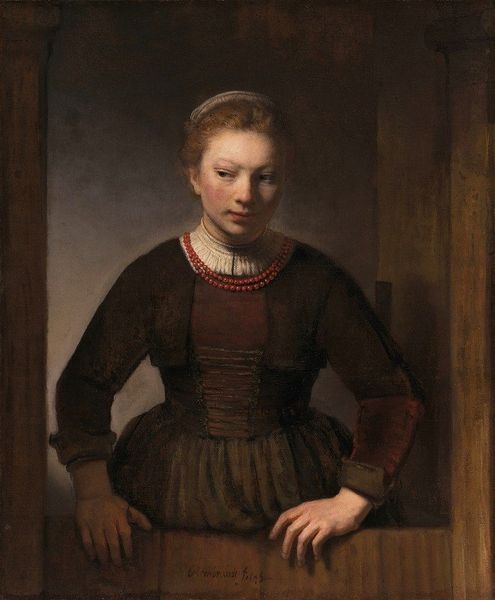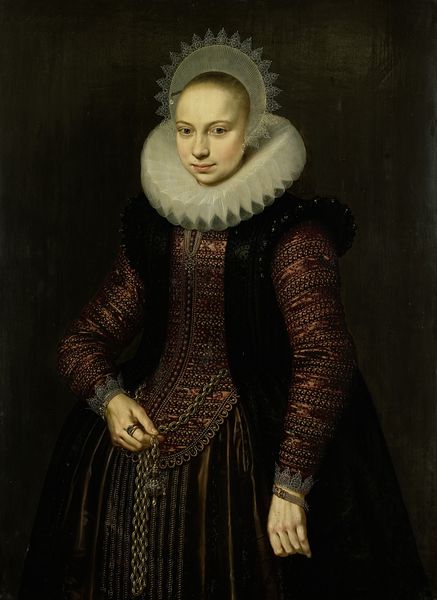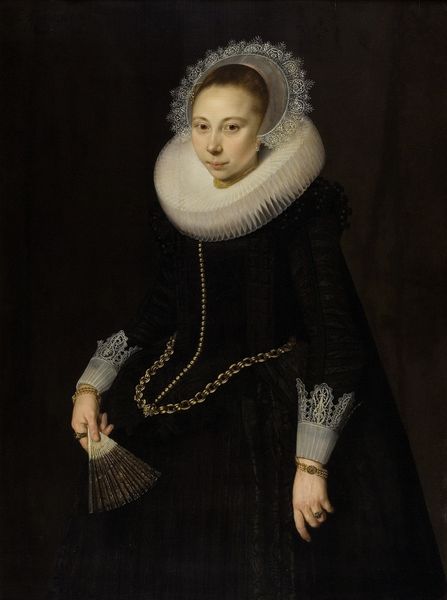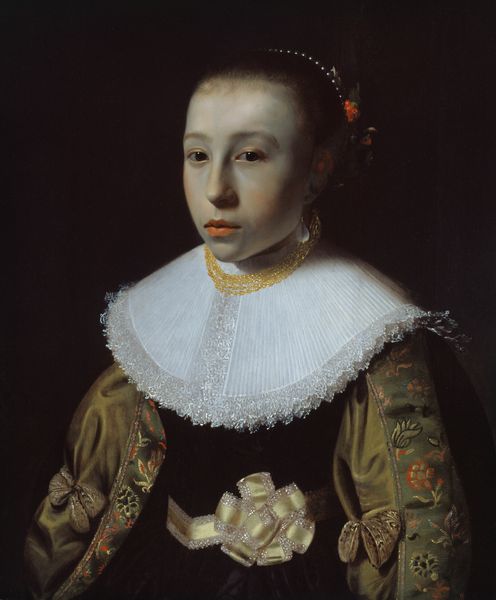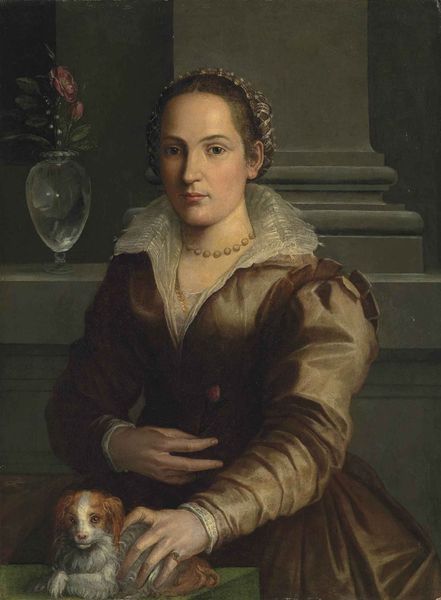
painting, oil-paint
#
portrait
#
painting
#
oil-paint
#
11_renaissance
#
italian-renaissance
Dimensions: height 66.5 cm, width 49.5 cm, depth 7.3 cm
Copyright: Rijks Museum: Open Domain
Curator: This oil painting, simply titled "Portrait of a Woman", dates from somewhere between 1525 and 1549 during the Italian Renaissance, and is attributed to an anonymous artist. Editor: I am immediately drawn to the woman's gaze. She possesses such calm self-assurance. The artist has done a brilliant job of capturing her poised intensity against the deep red backdrop. Curator: I find her attire equally compelling. Notice the intricately detailed fabric and delicate frills. Costume, in these portraits, served as a potent symbol of social status, of course, but also of personal expression, depending on social and religious expectations. This woman, with the dark embellishments and pearl necklace, exudes understated power. Editor: The stark contrast between the black and white in her dress really sets the image apart. There’s an undeniable complexity to the image, and in turn, a presumed complexity to her persona. How do you see the lack of an attributed artist fitting into this particular narrative of presentation? Curator: That anonymity is incredibly frustrating! But not entirely surprising. For centuries, women, whether artists or the subjects of art, have often been marginalized or overlooked in historical accounts. What might this woman's experience have been, positioned within a society that privileged certain voices over others? Editor: Exactly! Considering the potential sitter for the painting is essential. Without a named artist to center ourselves, and with limited historical information, it’s vital that we recognize all we can deduce from her portrait as a political act, whether it was intentional or unintentional. The subject and artist have resisted time here, which suggests strength and resolve, but also erasure. Curator: It is powerful to consider her outside the dominant narratives, forcing us to confront whose stories get told and how we attribute value. Editor: Agreed. Ultimately, this portrait encourages us to explore the complex relationship between art, identity, and societal expectations, leaving lingering questions regarding the very politics of imagery.
Comments
No comments
Be the first to comment and join the conversation on the ultimate creative platform.
